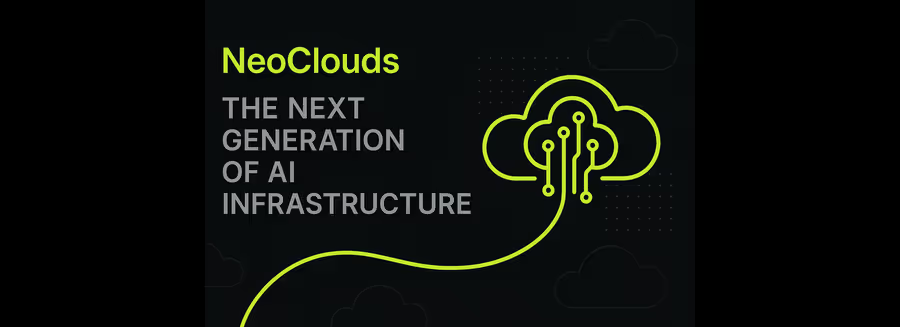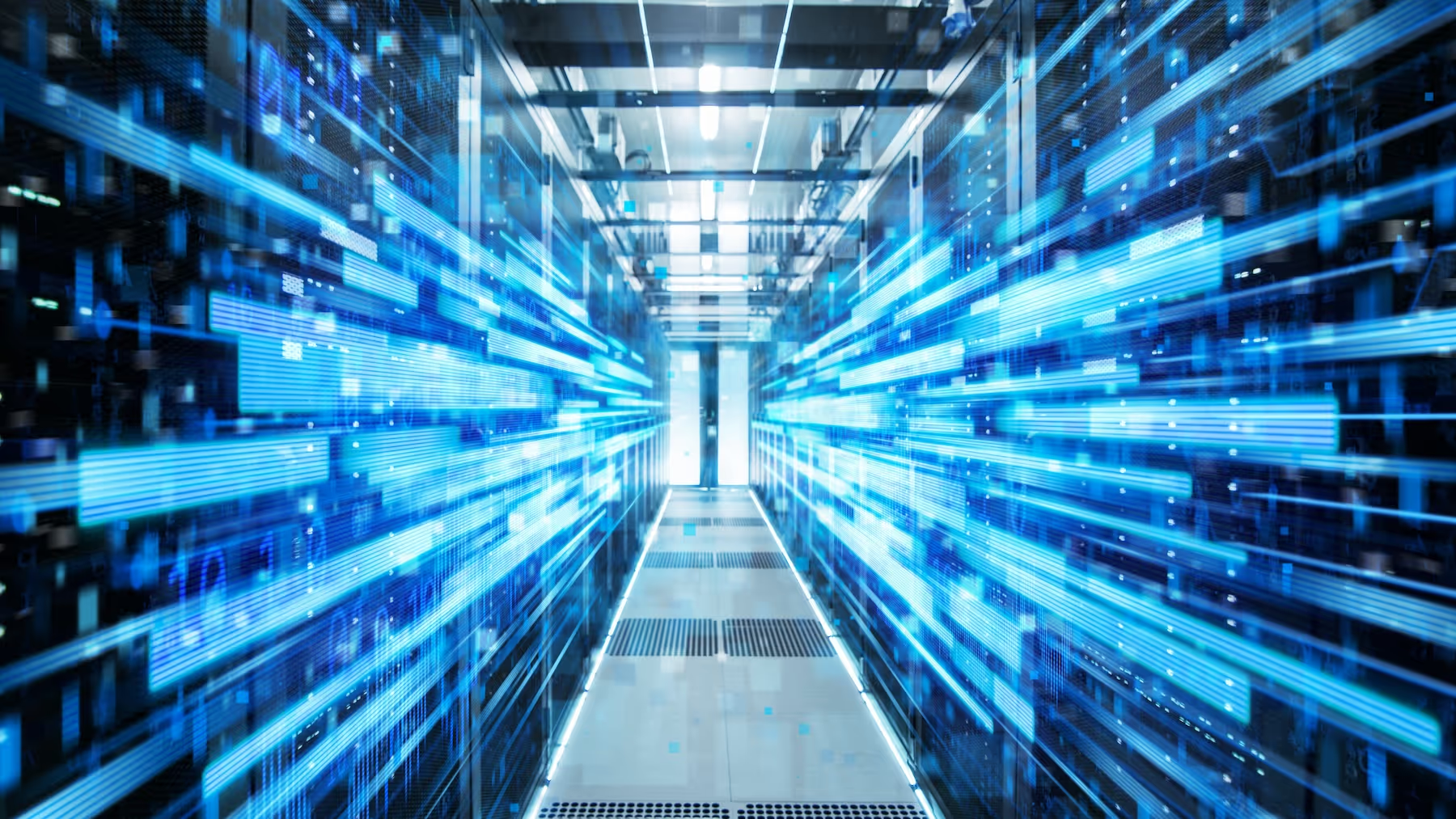What are Neoclouds: The Next Generation of AI Infrastructure

What is a neocloud?
A neocloud specializes in offering high-performance computing, especially GPU-as-a-Service (GPUaaS), tailored for demanding AI and machine learning workloads.
Unlike traditional hyperscalers, which offer broad, general-purpose cloud services, neoclouds are a cloud compute provider focused on delivering:
- Bare-metal access to top-tier GPUs
- Predictable flat-rate pricing
- Infrastructure optimized for high-throughput deep learning
Their cloud services are tailored for specialized AI and GPU workloads, setting them apart from the more diversified offerings of traditional providers.
What are core attributes of a neocloud?
There are 3 core attributes of a neocloud:
- GPU-centric architecture
- Transparent pricing models
- Rapid elasticity
Read on to learn more about each specific attribute and its benefits for AI teams.
GPU-centric architecture
Leading neoclouds deliver high-bandwidth connectivity at every level of the stack. These providers offer specialized gpu compute and gpu cloud services tailored for AI workloads, supporting both on-demand and large-scale deployments.
Inside each node, NVIDIA H100 SXM5 GPUs are linked by NVLink-4, providing up to 900 GB/s of intra-node bandwidth. NVIDIA GPUs form the backbone of the infrastructure, ensuring reliability and high performance for AI training and inference.
Some neoclouds, like Voltage Park, deploy 3.2 Tb/s InfiniBand fabrics, 4× faster than the standard 800 Gb/s Ethernet links other cloud providers use. The network topology and networking solutions, including advanced InfiniBand and NVLink configurations, are optimized for high throughput and low congestion, especially in multi-tenant environments.
These networking solutions contribute to better performance for demanding AI tasks by reducing bottlenecks and improving workload isolation. This architecture lets seamless model parallelism, minimizing I/O bottlenecks and accelerating training for today’s largest AI workloads.
Transparent pricing models
Neocloud providers often publish a single per-GPU hourly rate that includes networking, storage, and support, eliminating complex billing surprises.
Rapid elasticity
The infrastructure of an AI neocloud can scale from a handful of GPUs to thousands of GPUs in less than 15 minutes, without waitlists or over-provisioning.
What’s driving rapid neocloud growth?
GPU infrastructure is the new normal
As the scale and complexity of AI models continue to grow, general-purpose CPUs are no longer sufficient for training and inference workloads. The increasing demand for AI training and AI inference workloads is driving the adoption of specialized infrastructure.
Modern AI development demands highly parallel compute architectures optimized for massive data throughput.
According to IDC, servers with embedded accelerators (such as GPUs, TPUs, and custom AI chips) accounted for 70% of AI infrastructure spending in H1 2024. This represents a 178% year-over-year growth. IDC projects that this share will exceed 75% by 2028, with AI-accelerated infrastructure growing at a 42% compound annual growth rate (CAGR).
At this scale, access to specialized GPU instances and high end GPUs is essential for large-scale AI projects. Training state-of-the-art models can require tens of thousands of GPUs, highlighting the need for robust and scalable infrastructure.
This trend underscores the centrality of specialized compute hardware, particularly GPUs, in powering the next generation of AI capabilities. As a result, access to reliable, high-performance GPU infrastructure is becoming a strategic priority for AI-native organizations across sectors, especially for AI teams in enterprises and research institutions.
Trillion-dollar AI market expansion
Bain & Company estimates the AI hardware and software market will reach $780–$990 billion by 2027, growing at 40–55% annually. Rapid advancements in generative AI, increasing enterprise adoption, and a surge in demand for high-performance compute drives this growth.
Both traditional, specialized, and cloud compute providers are competing to deliver scalable AI infrastructure to meet this demand. This growth trajectory underscores the critical role of scalable and efficient AI infrastructure as well as superior performance and competitive pricing to attract and retain customers.
Government investments at historic scale
Governments are now investing at unprecedented levels to support AI infrastructure and sovereignty. Here are three recent examples:
- United States: The Stargate Initiative marks an unprecedented federal commitment to AI infrastructure, with up to $500 billion allocated over four years. The program kicks off with an immediate $100 billion investment, targeting the development of national compute hubs, sovereign AI capabilities, and strategic public-private partnerships. This initiative reflects growing recognition that AI leadership is critical to economic competitiveness and national security.
- European Union: The European Commission has launched the “Have Your Say” public consultation (open through June 2025) to shape future policy on cloud infrastructure, AI, and digital sovereignty. This effort signals the EU’s strategic intent to foster an interoperable and sovereign AI ecosystem, ensuring alignment with European values while encouraging industrial innovation across member states.
- Saudi Arabia: In May 2025, NVIDIA announced partnerships with several organizations in a multi-phase effort to turn the country into an "AI Hub" through the creation of an omniverse cloud and AI supercomputer.
Bare metal vs. virtualized GPU clouds
If you’re running large AI workloads, here are some key performance differences between virtualized hyperscalers and bare-metal neoclouds.
Virtualization adds measurable latency to compute and networking tasks. Bare-metal orchestration avoids these penalties, yielding predictable throughput, particularly vital for model-parallel workloads and high-performance inference.
Bare metal neoclouds also help organizations avoid vendor lock in by enabling more flexible deployment options and integration with multiple cloud providers.
Neocloud: Infrastructure Overview
Voltage Park draws on its Silicon Valley roots to deliver technical innovation in AI infrastructure.
The Neocloud infrastructure is designed with a deep understanding of AI workload requirements, ensuring tailored, high-performance solutions.
Here's the hardware and infrastructure behind our high-performance AI Neocloud.
Neocloud clusters scale linearly thanks to an NVSwitch fabric that prevents the hop-penalty bottlenecks seen in traditional split-rack hyperscaler setups.
Real world neocloud use cases
Here are 4 real world neocloud use cases to illustrate the rapid growth of GPUaaS.
- LLM training: Large clusters of H100s reduce training cycles from weeks to days for 100B+ parameter models.
- Sub-10ms inference: Bare-metal slices ensure low-latency responses for chatbots and recommendation systems.
- Scientific computing: Genomics, climate models, and simulations benefit from high-memory nodes and flash storage.
- Startup-friendly growth: Start small with 8 GPUs, and burst to thousands without CapEx commitments.
Neocloud Frequently Asked Questions
How fast can I launch a cluster?
Most users deploy within 15 minutes via GUI or API.
Do I need a long-term contract?
No. Pay only for active GPU-hours. Volume discounts start at 500 GPU-hours/month.
When should I choose InfiniBand over 100 GbE?
Use InfiniBand when workloads demand ultra-low latency or involve tight inter-GPU communication (e.g., model parallelism). 100 GbE works well for early exploration.
Why choose Voltage Park's neocloud?
Users appreciate our cost transparency and 24/7/365 expert support. With NVIDIA HGX H100s starting at $1.99/hr for 100 GbE clusters with full NVLink bandwidth, zero hypervisor drag, and flash storage keep workloads on schedule. We operate more than 40,000 NVIDIA GPUs across the Hopper, Blackwell and Grace Blackwell architectures and provide around-the-clock support from trained experts located inside our 7 Tier 3+ data centers.
%201.avif)


